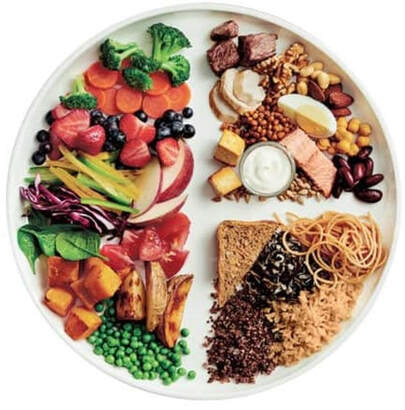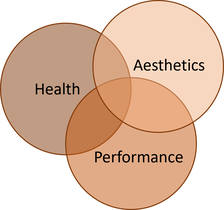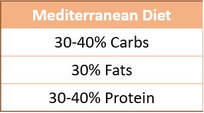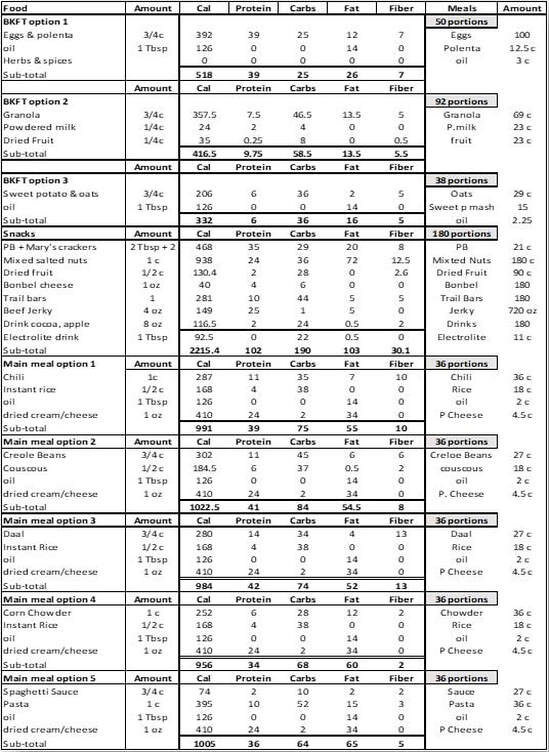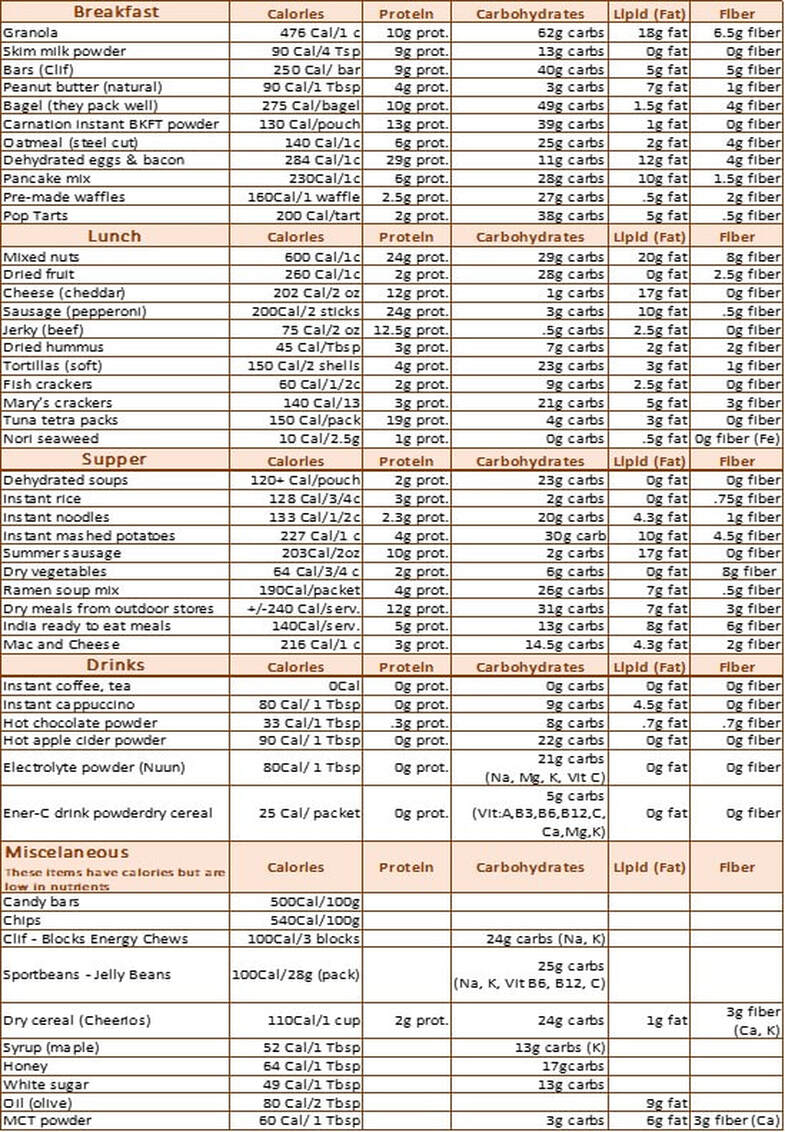nutritional fundamentals
Macronutrients
Food is categorised in three macronutrients: proteins, carbohydrates, and lipids. Here is a brief overview of the macronutrients and their basic functions. For a broader understanding of nutrition and its effect during sporting activities, please investigate sports nutrition.
Proteins are made of amino acids and are the building blocks used for enzymes, hormones, tissue replication and repair. A key component of muscles, proteins assist in increasing the size and strength of muscle fibers (cells). A base calculation of how much protein is required for an athlete in a day is 1.8 X weight in Kg. This will give you the number of grams to be consumed daily. Julie eats around 3 portions of 4oz of protein per day, while Simon eats 3 portions of 6oz per day.
Sources of protein include meat, poultry, fish, eggs, and dairy. Vegetarians can form complete vegetarian proteins by combining rice, legumes, and corn. There are also many brands of protein powders made from dairy, soy, and/or legumes.
Carbohydrates are the primary source of energy for cellular function. There are 3 types of carbs: monosaccharides (fruit, fruit juice, honey, and ripe veggies), disaccharides (table sugar, milk sugar, maple syrup), and polysaccharides (potatoes, corn, grains, and beans). Carbs are especially important for strenuous (anaerobic) activities lasting more than sixty to ninety minutes. If carbs are not used immediately, they are stored as glycogen in muscle cells and in the liver, or as fatty deposits. Two hours of anaerobic activity will deplete the glycogen stores from the muscle cells. ‘Bonking’ during an endurance competition, occurs when all glycogen stores have been depleted and no new carbohydrates are consumed. The athlete will experience weakness, extreme fatigue, and light-headedness. Therefore, it is important to eat regularly to replenish glycogen stores.
Hiking typically is an aerobic activity. It will utilise mostly fat stores and some glycogen to produce the energy required. Because digestion is affected by long aerobic activity, the body can tolerate ingesting more polysaccharide carbs.
Sources of healthy carbs include fruits, vegetables, whole grains, legumes, and nuts and seeds. Table sugar and processed foods such as baked goods and junk foods offer quick carbs but offer little nutrition or fiber and can cause inflammation and gastric distress.
Lipids, or fats, are stored in fat cells and in muscle fibers in the form of triglycerides. Lipids are utilised in the hormonal system, nervous system, in cellular functioning, and aerobic activities for energy production.
Food is categorised in three macronutrients: proteins, carbohydrates, and lipids. Here is a brief overview of the macronutrients and their basic functions. For a broader understanding of nutrition and its effect during sporting activities, please investigate sports nutrition.
Proteins are made of amino acids and are the building blocks used for enzymes, hormones, tissue replication and repair. A key component of muscles, proteins assist in increasing the size and strength of muscle fibers (cells). A base calculation of how much protein is required for an athlete in a day is 1.8 X weight in Kg. This will give you the number of grams to be consumed daily. Julie eats around 3 portions of 4oz of protein per day, while Simon eats 3 portions of 6oz per day.
Sources of protein include meat, poultry, fish, eggs, and dairy. Vegetarians can form complete vegetarian proteins by combining rice, legumes, and corn. There are also many brands of protein powders made from dairy, soy, and/or legumes.
Carbohydrates are the primary source of energy for cellular function. There are 3 types of carbs: monosaccharides (fruit, fruit juice, honey, and ripe veggies), disaccharides (table sugar, milk sugar, maple syrup), and polysaccharides (potatoes, corn, grains, and beans). Carbs are especially important for strenuous (anaerobic) activities lasting more than sixty to ninety minutes. If carbs are not used immediately, they are stored as glycogen in muscle cells and in the liver, or as fatty deposits. Two hours of anaerobic activity will deplete the glycogen stores from the muscle cells. ‘Bonking’ during an endurance competition, occurs when all glycogen stores have been depleted and no new carbohydrates are consumed. The athlete will experience weakness, extreme fatigue, and light-headedness. Therefore, it is important to eat regularly to replenish glycogen stores.
Hiking typically is an aerobic activity. It will utilise mostly fat stores and some glycogen to produce the energy required. Because digestion is affected by long aerobic activity, the body can tolerate ingesting more polysaccharide carbs.
Sources of healthy carbs include fruits, vegetables, whole grains, legumes, and nuts and seeds. Table sugar and processed foods such as baked goods and junk foods offer quick carbs but offer little nutrition or fiber and can cause inflammation and gastric distress.
Lipids, or fats, are stored in fat cells and in muscle fibers in the form of triglycerides. Lipids are utilised in the hormonal system, nervous system, in cellular functioning, and aerobic activities for energy production.
|
Because 1 gram of fat has 9 Calories compared to 4 Calories per gram of protein or carbohydrates, it is also a great source of energy. Lipids can provide fifty to eighty percent of energy needs during prolonged aerobic exercise. The liver will release fat stores as ketones which can be used for energy. Fat cells also store fat soluble vitamins (A, D, E, K). Because of the benefits of healthy fats for our metabolism and energy production, we try to have 30 % of our daily Calories come from fats. Healthy fats can be found in olives (olive, avocado, and coconut) oil, cold water fish, coconut, avocado, nuts, and seeds. Fiber is often included in the macronutrient category. Although it does not provide energy, it improves the health of the gastrointestinal system and therefore, does contribute to improved metabolic function. It is recommended to consume twenty-five to thirty-four grams of fiber per day. Fiber slows down the digestion of carbs. Good sources of fiber can be found in fruits, vegetables, whole grains, and legumes. |
Micronutrients
Micronutrients are smaller nutritional components, vitamins, and minerals, that are required for cellular function, chemical messaging, enzyme, and hormone production. Some Vitamins and essential oils assist in decreasing oxidative stress and may speed the healing process. These micronutrients include vitamin E and Omega oils (3, 6, 9).
Some minerals, named electrolytes include sodium and potassium. These minerals, along with calcium and magnesium, assist in chemical messaging and transport into, and out, of cells. Without these important minerals muscle contraction and metabolic functioning may become negatively affected and lead to serious health problems. Electrolytes can be found in salty foods, dried fruits, vegetables, nuts, and seeds. There are various electrolyte drinks on the market. These vary in effectiveness and quality. Do your research prior to choosing one. . One thing to remember about electrolyte pills is that they are hydrophilic. If they are ingested without sufficient water, they will draw water away from your digestive systems and may cause more dehydration. Always drink 250 ml (8oz) of water with the electrolyte pills.
Micronutrients are smaller nutritional components, vitamins, and minerals, that are required for cellular function, chemical messaging, enzyme, and hormone production. Some Vitamins and essential oils assist in decreasing oxidative stress and may speed the healing process. These micronutrients include vitamin E and Omega oils (3, 6, 9).
Some minerals, named electrolytes include sodium and potassium. These minerals, along with calcium and magnesium, assist in chemical messaging and transport into, and out, of cells. Without these important minerals muscle contraction and metabolic functioning may become negatively affected and lead to serious health problems. Electrolytes can be found in salty foods, dried fruits, vegetables, nuts, and seeds. There are various electrolyte drinks on the market. These vary in effectiveness and quality. Do your research prior to choosing one. . One thing to remember about electrolyte pills is that they are hydrophilic. If they are ingested without sufficient water, they will draw water away from your digestive systems and may cause more dehydration. Always drink 250 ml (8oz) of water with the electrolyte pills.
Supplementation
There is an ongoing debate on vitamin supplements. If a diet is varied and includes whole foods, supplementation may not be necessary. But lower quality or refined foods, advancing age, digestive disorders, and other factors may reduce nutrient absorption. The thru-hiker might consider adding a multi-vitamin, omega-3, and/or Vitamin C when on a wilderness trek where there is little access to any fresh whole foods. Eating dehydrated foods for a prolonged period may lead to lower micronutrients in our system.
If you wish to add supplements to your trek meal plan, chose a reputable company that does not add colouring, fillers, or other unwanted ingredients.
* Food items and their individual Macronutrient and Caloric values can be found at the bottom of this page.
Water
Water may be the most important nutrient. We can live a few weeks without food but only a few days without water. On a trek you will consume 3 to 8 liters of water daily depending on your exertion level, the temperature, the elevation, and the humidity level. Keeping a proper balance of hydration and electrolytes is important. Pay attention to how you feel, are you perspiring? What colour is your pee? Clear or light-yellow pee indicates you are well hydrated. But dark pee, or not voiding for many hours may mean you need to drink more. It is best to drink small sips frequently than having large amounts of water at one time. In this way, your body can more easily keep the salts balanced and disperse the water throughout your tissues.
Diets
We’ve often struggled to balance a healthy diet with the thru-hiking diet. In our research we have come across discussions regarding the intent of nutrition. This has made things much clearer in our minds. We ask ourselves the following questions and they help guide us in our food selections.
There is an ongoing debate on vitamin supplements. If a diet is varied and includes whole foods, supplementation may not be necessary. But lower quality or refined foods, advancing age, digestive disorders, and other factors may reduce nutrient absorption. The thru-hiker might consider adding a multi-vitamin, omega-3, and/or Vitamin C when on a wilderness trek where there is little access to any fresh whole foods. Eating dehydrated foods for a prolonged period may lead to lower micronutrients in our system.
If you wish to add supplements to your trek meal plan, chose a reputable company that does not add colouring, fillers, or other unwanted ingredients.
* Food items and their individual Macronutrient and Caloric values can be found at the bottom of this page.
Water
Water may be the most important nutrient. We can live a few weeks without food but only a few days without water. On a trek you will consume 3 to 8 liters of water daily depending on your exertion level, the temperature, the elevation, and the humidity level. Keeping a proper balance of hydration and electrolytes is important. Pay attention to how you feel, are you perspiring? What colour is your pee? Clear or light-yellow pee indicates you are well hydrated. But dark pee, or not voiding for many hours may mean you need to drink more. It is best to drink small sips frequently than having large amounts of water at one time. In this way, your body can more easily keep the salts balanced and disperse the water throughout your tissues.
Diets
We’ve often struggled to balance a healthy diet with the thru-hiking diet. In our research we have come across discussions regarding the intent of nutrition. This has made things much clearer in our minds. We ask ourselves the following questions and they help guide us in our food selections.
|
|
Performance: Change nutrition depending on activity levels
|
We typically aim to find a sweet spot where performance and health meet. It is not always possible on the trail, so this is the time where we can enjoy a few extras (refined foods). We focus on choosing high quality whole foods whenever possible. We try to have as much variety as available and pay attention to our macro ratios and when we eat them. It’s a bit of science we enjoy geeking out on.
|
No matter which diet strategy you choose it makes sense to research what food will be available on the trek.
This table is the outcome of the nutritional preparation for one of our trips. It outlines:
|
The Food Macronutrient and Caloric Values Table.

